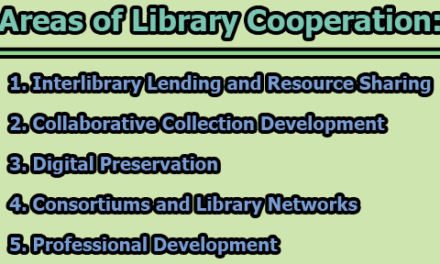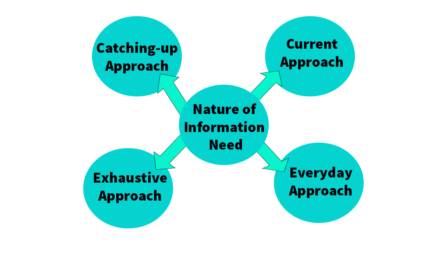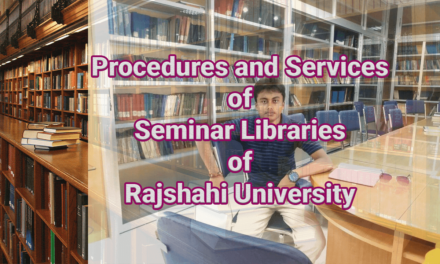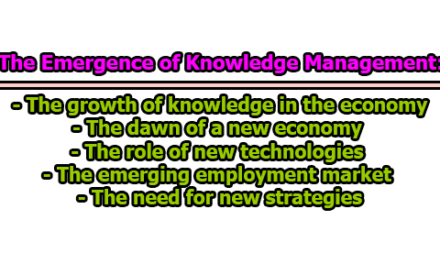Difference between Digital Preservation and Digitization:
In the digital age, preserving and accessing information has become crucial for maintaining cultural heritage and knowledge. Two important processes that aid in this endeavor are “Digital Preservation” and “Digitization.” While they may sound similar, they serve distinct purposes in managing information and ensuring its longevity. Let’s explore the difference between Digital Preservation and Digitization.
| Point | Digital Preservation | Digitization |
| Purpose | Aimed at ensuring long-term accessibility and usability of digital content and data. It focuses on the preservation of content and context, including metadata and provenance. | Involves converting analog or physical materials into digital formats. It focuses on creating digital replicas of the original content, capturing the information. |
| Scope | Encompasses a comprehensive set of strategies, policies, and actions to guarantee the integrity and authenticity of digital assets. It covers a wide range of digital content types, including documents, images, audio, video, and software. | Primarily concerned with the conversion of physical materials, limiting its scope to the initial transformation process. Common digitization targets include books, manuscripts, photographs, artworks, and audiovisual materials. |
| Process | Involves activities like data archiving, data migration, emulation, format standardization, and metadata management. It may also include refreshing and replication of data over time to adapt to changing technologies and storage mediums. | Involves scanning, imaging, or converting physical items into digital files or data. Additional steps may include image enhancement and Optical Character Recognition (OCR) for text-based materials. The process varies based on the type of material being digitized. |
| Information Handling | In digital preservation, active curation, and ongoing management are required to maintain the usability of digital assets. Migration to new file formats, periodic data integrity checks, and software emulation might be necessary. | In digitization, the handling of information primarily revolves around the digitization process itself, which may include image resolution selection, color correction, or audio/video format conversion. Once digitized, the files are often considered static unless subsequent efforts are made for preservation. |
| Cost Implications | Digital preservation can involve substantial costs due to the need for continuous monitoring, migration to new formats, storage expenses, and staff expertise. The long-term commitment to maintaining digital assets may require significant financial investment. | Digitization costs are typically incurred during the initial conversion process. While these costs can be significant, they are often one-time expenses, with ongoing expenses primarily related to storage and access provisions. Digitization projects may have less expensive long-term requirements compared to preservation efforts. |
| Intellectual Control | Digital preservation emphasizes intellectual control and context to ensure meaningful access to digital assets. It seeks to capture relationships between data, documents, and metadata, enabling better interpretation and understanding. | Digitization primarily focuses on creating digital surrogates, with limited emphasis on capturing complex relationships between objects or documents. Metadata is more basic and straightforward to facilitate retrieval rather than in-depth analysis. |
| Timeframe | Implemented throughout the digital asset’s lifecycle to safeguard against format obsolescence, data loss, and technological changes. Digital preservation efforts are continuous and ongoing, often involving periodic assessments and updates. | A one-time process is performed when digitizing analog materials. After digitization, the original analog items may or may not be retained, depending on the institution’s policies or the materials’ historical value. |
| Longevity | Intended to ensure digital content remains accessible and authentic over the long term, spanning decades or even centuries. Preservation efforts may outlive the technological systems initially used to create the digital content. | Focuses on the immediate goal of creating digital copies and may not address the long-term preservation needs of the digitized content. Digital objects may face risks of obsolescence and loss if not adequately managed after digitization. |
| Metadata | Emphasizes robust metadata creation and management to provide context, provenance, and intellectual control over digital assets. Detailed metadata allows for easier search, retrieval, and understanding of digital content. | Metadata creation is relevant during digitization to facilitate organization and retrieval, but it may not be as comprehensive as in digital preservation. Metadata primarily focuses on basic descriptive information during the digitization process. |
| Data Integrity | Implements checks, fixity measures, and redundancy to maintain the integrity of digital content and detect and correct errors. Digital preservation systems often use checksums or hash values to ensure data remains unchanged over time. | Focuses on accurately capturing the information during conversion, but may not include extensive measures to ensure ongoing data integrity. Digitized files might not be subject to the same level of preservation-oriented integrity checks. |
| Legal Concerns | Addresses legal aspects like copyright, licensing, and access restrictions to ensure compliance with intellectual property rights and data privacy laws. Legal considerations are central to preserving digital content with restricted access. | Primarily concerned with obtaining rights for digitization and may not include comprehensive legal considerations for long-term preservation. While permission to digitize is essential, long-term access and rights management might not be thoroughly addressed. |
| User Access | Balances access controls to provide secure and restricted access where necessary, protecting sensitive or private data. Preservation systems often implement access controls to restrict content based on copyright, privacy, or licensing constraints. | Aimed at facilitating broader access to information, making it widely available to users with appropriate permissions. Digitized content is typically made accessible through digital libraries, online platforms, and repositories, catering to a wider audience. |
| Collaboration | Often involves collaboration between institutions, organizations, and international initiatives to create a distributed network of preserved content. The sharing of best practices and standards helps foster a cohesive preservation ecosystem. | May or may not involve collaboration, as the digitization process can be managed independently by a single organization or entity. Collaborative efforts may still exist within specific digitization projects or initiatives. |
| Risk Mitigation | Digital preservation aims to mitigate a wide range of risks, including hardware failure, software obsolescence, data loss, and natural disasters. It implements multiple redundant copies, offsite backups, and data integrity checks. | Digitization primarily addresses the risk of losing access to historical materials due to the degradation of analog formats. While digitization creates digital backups, the primary focus is on making the content accessible rather than ensuring long-term survivability. |
| Research and Scholarship | Digital preservation is critical for supporting ongoing research and scholarship by maintaining the integrity of data and ensuring its long-term availability. It facilitates reproducibility and the citation of digital sources in academic work. | Digitization plays a crucial role in providing access to primary source materials, enabling researchers and scholars to explore historical or cultural artifacts that were previously limited to physical locations. While digitization facilitates research, it does not inherently ensure the long-term sustainability of digital assets for future scholars. |
It is apparent that Digital Preservation and Digitization are distinct processes with different purposes and considerations. Digital Preservation focuses on safeguarding digital assets for the long term, ensuring their usability, authenticity, and accessibility over time. It involves continuous curation, migration, and monitoring to mitigate risks and technological obsolescence. On the other hand, Digitization is a one-time process that aims to create digital replicas of analog materials, facilitating broader access and enhancing searchability. While both processes are essential for preserving and disseminating knowledge, understanding their differences allows for better planning and allocation of resources to ensure the longevity of digital content and cultural heritage for future generations.
References:
- Bearman, D., & Trant, J. (Eds.). (2005). Museums and the Web 2005: Proceedings. Archives & Museum Informatics.
- Hedstrom, M., Lee, C. A., & Olson, G. (Eds.). (2002). Proceedings of the 1st ACM/IEEE-CS joint conference on Digital libraries. ACM.
- Walters, T. O. (2006). Digital preservation: The quest for authenticity and reliability. The American Archivist, 69(2), 283-294.
- Anderson, D. (2012). Digital curation: Theory and practice. Chandos Publishing.
- Lavoie, B. F., & Dempsey, L. (2004). Thirteen ways of looking at… digital preservation. D-Lib Magazine, 10(7/8).
- Rosenthal, D. S. (2012). Format obsolescence: Assessing the threat and developing strategies for mitigating it. The International Journal of Digital Curation, 7(1), 108-126.
- Lavoie, B. F. (2008). The Open archival information system reference model: Introductory Guide. The Blue Book. OCLC Online Computer Library Center.

Assistant Teacher at Zinzira Pir Mohammad Pilot School and College










